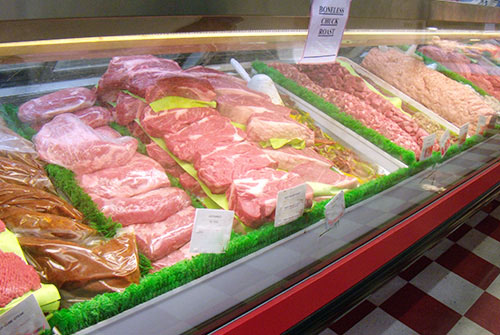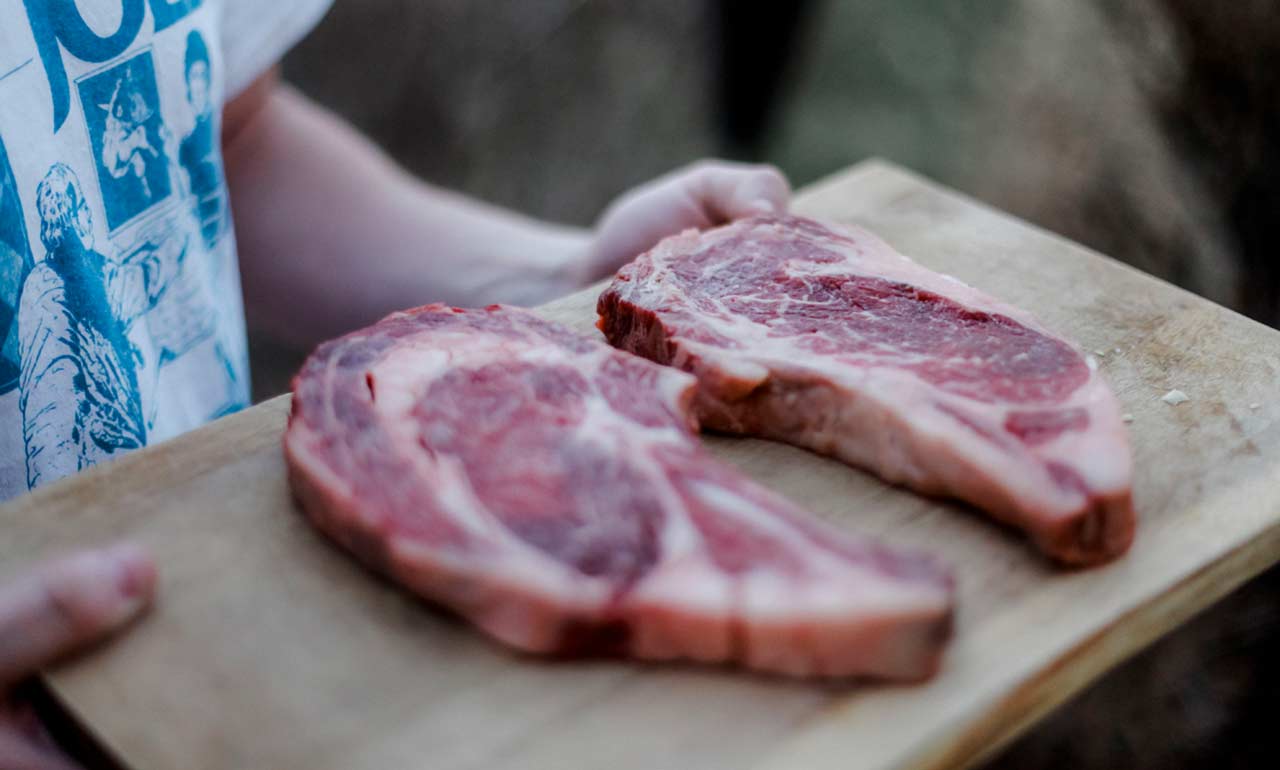Browse Through Bagley Farms Meat Market Edwardsville IL for Farm-Fresh Meat and Specialty Cuts
Browse Through Bagley Farms Meat Market Edwardsville IL for Farm-Fresh Meat and Specialty Cuts
Blog Article
Reveal the Art of the Butcher's Cut in a Modern Meat Market
In the ever-evolving landscape of modern-day meat markets, the butcher's cut has transcended its conventional roots, combining olden workmanship with contemporary techniques. bagley farms meat market edwardsville il. Today's butchers are not simply processors of meat; they are experienced craftsmens that stress sustainability and moral sourcing. Their know-how in choose and preparing cuts customized to details culinary needs offers an unrivaled eating experience. What truly sets the modern-day butcher apart is their capacity to forge a deeper link between customers and the origins of their meat. How do these masters equilibrium practice with advancement, and what implications does this have for the future of meat intake?
Evolution of Butchery Techniques

The mid-20th century saw butchery methods even more improved by clinical insights into muscular tissue biology and meat aging, boosting both tenderness and preference. Technologies like vacuum packaging and refrigeration extended product shelf-life, permitting butchers to expand offerings and improve quality assurance. This duration also noted the surge of specialized devices, such as band saws and meat slicers, which boosted accuracy and effectiveness in meat handling.
Digital systems now assist in tracking pet provenance and enhancing cuts to meet specific consumer choices. In addition, a revival in artisanal butchery has arised, blending traditional abilities with contemporary expertise to cater to customers seeking moral and sustainable meat alternatives.

Understanding Meat Cuts

Understanding the ins and outs of meat cuts is crucial for both butchers and customers looking for top quality and value. Each cut originates from a different component of the pet, presenting one-of-a-kind tastes, appearances, and food preparation techniques. Proficiency of these distinctions not only boosts cooking experiences however likewise makes the most of the energy of each carcass. For butchers, precise cuts reflect ability and respect for the craft, ensuring minimal waste and optimal yield.
The main groups of meat cuts include primitive, sub-primal, and retail cuts. Primitive cuts, such as the loin, rib, and chuck, are the huge sections initially divided from the carcass. Butchers after that damage these down even more right into sub-primal cuts, prior to ultimately generating retail cuts readily available to consumers, like ribeye or tenderloin. Each phase calls for careful attention to physiological structure and muscular tissue composition.
Recognizing muscular tissue structure is critical; muscular tissues used more regularly by the pet tend to be tougher and are best suited for sluggish food preparation techniques, while less-used muscular tissues, like those anchor located in the loin, are much more tender and suitable for cooking or roasting. Familiarity with these differences empowers consumers to make informed options, improving their cooking undertakings.
Choosing High Quality Meat
Choosing the appropriate meat includes more than simply picking an aesthetically attractive piece from the display screen. The art of picking quality meat requires a critical eye and expertise of particular features that represent quality and quality. First of all, focus on the shade; beef should have an intense, cherry-red shade, while lamb should show a soft pink tone, and pork a pale pink. This indicates the meat is fresh and hasn't been revealed to oxygen for also long.
Secondly, consider the marbling, which refers to the white flecks of fat within the muscular tissue. Appropriate marbling is a vital indication of tenderness and taste, as it thaws during food preparation, improving the meat's juiciness. Keep in mind, higher marbling typically correlates with superior quality cuts, such as USDA Prime.
Appearance is an additional important aspect; meat ought to feel firm to the touch, not slimed or excessively soft. In addition, be conscious of the fragrance. Fresh meat must have a clean, neutral scent, complimentary from any kind of sour or off-putting smells.
Combining Cuts With Food Preparation Techniques
Efficiently combining cuts of meat with the suitable food preparation methods is crucial for achieving optimal taste and appearance. These techniques enhance the meat's all-natural tastes and make sure a juicy surface.
Conversely, harder cuts like brisket and chuck roast are abundant in collagen, which breaks down into jelly when cooked slowly. These cuts are suitable for braising or slow-moving roasting, enabling the meat helpful resources to soften in time and create deep, complex tastes. Likewise, cuts such as short ribs and pork shoulder get on well with slow-cooking approaches, where prolonged cooking times change their robust appearances into delicious dishes.
Lamb shanks and oxtail, which require extended food preparation to soften, are perfect candidates for stewing or sluggish simmering. These methods coax out rich, hearty tastes while preserving dampness. By understanding the unique features of each cut, chefs and home cooks alike can boost their cooking developments, making sure each meal is both pleasing and unforgettable.
The Butcher's Duty Today
Navigating the progressing landscape of the modern-day meat market, the butcher's duty today expands beyond simple prep work of cuts. Contemporary butchers are culinary artisans, instructors, and advocates for sustainable methods. They bridge the space in between i loved this the farm and the fork by making certain honest sourcing, comprehending animal husbandry, and prioritizing openness in the supply chain. This change shows the expanding consumer need for top quality over amount, where provenance and animal welfare are vital.
Along with crafting exact cuts, butchers now involve straight with clients, offering cooking guidance and tailoring selections to fit specific needs and preferences. Their know-how in meat aging, marbling, and taste accounts encourages customers to make enlightened decisions, boosting their cooking experiences. This individualized solution exemplifies the butcher's progressing role as a relied on expert in the kitchen area.
Furthermore, butchers are essential in lessening waste, making use of whole animals to produce diverse products such as sausages and stocks - bagley farms meat market edwardsville il. This detailed technique not just values the pet but additionally straightens with modern sustainability objectives. By doing this, the contemporary butcher symbolizes both tradition and advancement, adapting to an ever-changing market while preserving the creativity and stability of their craft

Final Thought
The modern butcher's craft intricately weaves conventional strategies with modern technologies, highlighting lasting methods and honest sourcing. Mastery in comprehending diverse meat cuts and quality indications empowers butchers to offer enlightened suggestions, straightening specific cuts with optimal food preparation approaches. This know-how not only elevates cooking experiences however likewise strengthens the connection between customers and the beginnings of their food. By honoring historic methods while embracing contemporary demands, the butcher's function continues to be crucial in today's sophisticated meat market.
Report this page